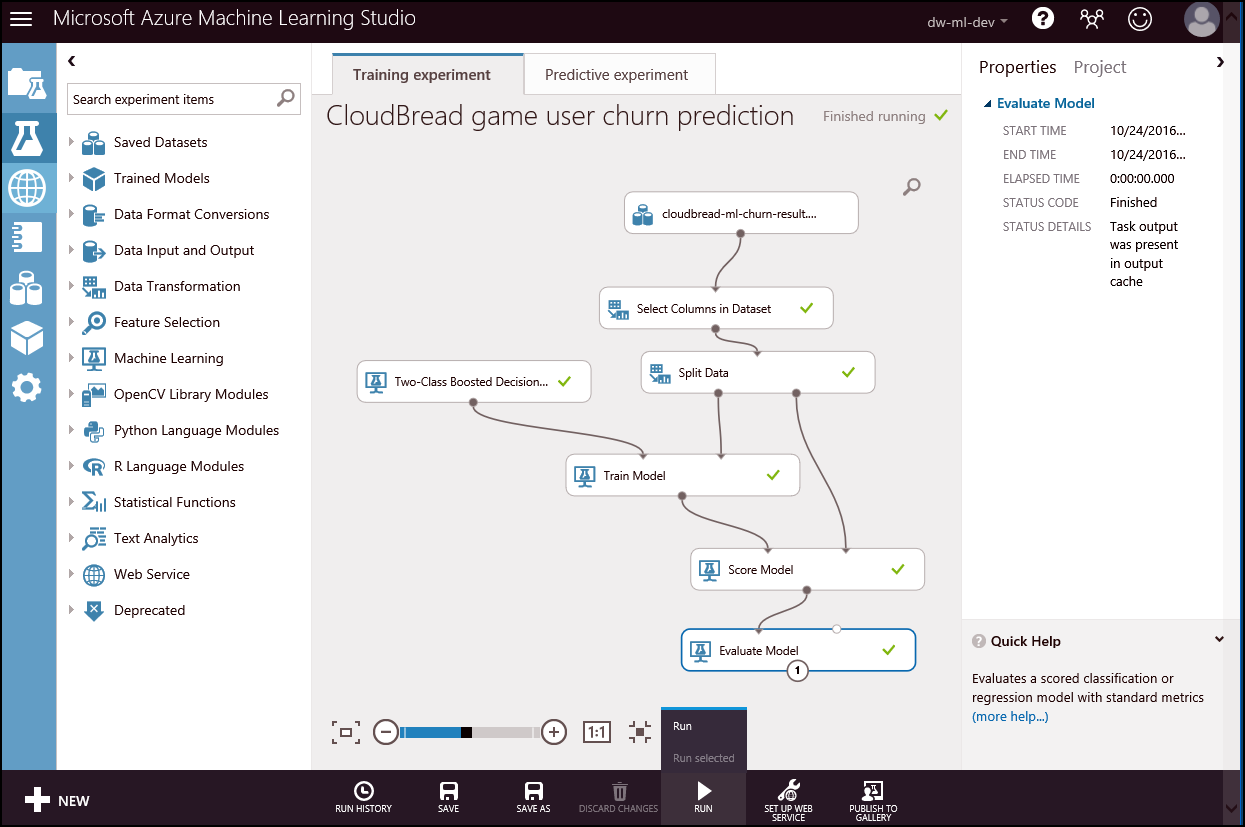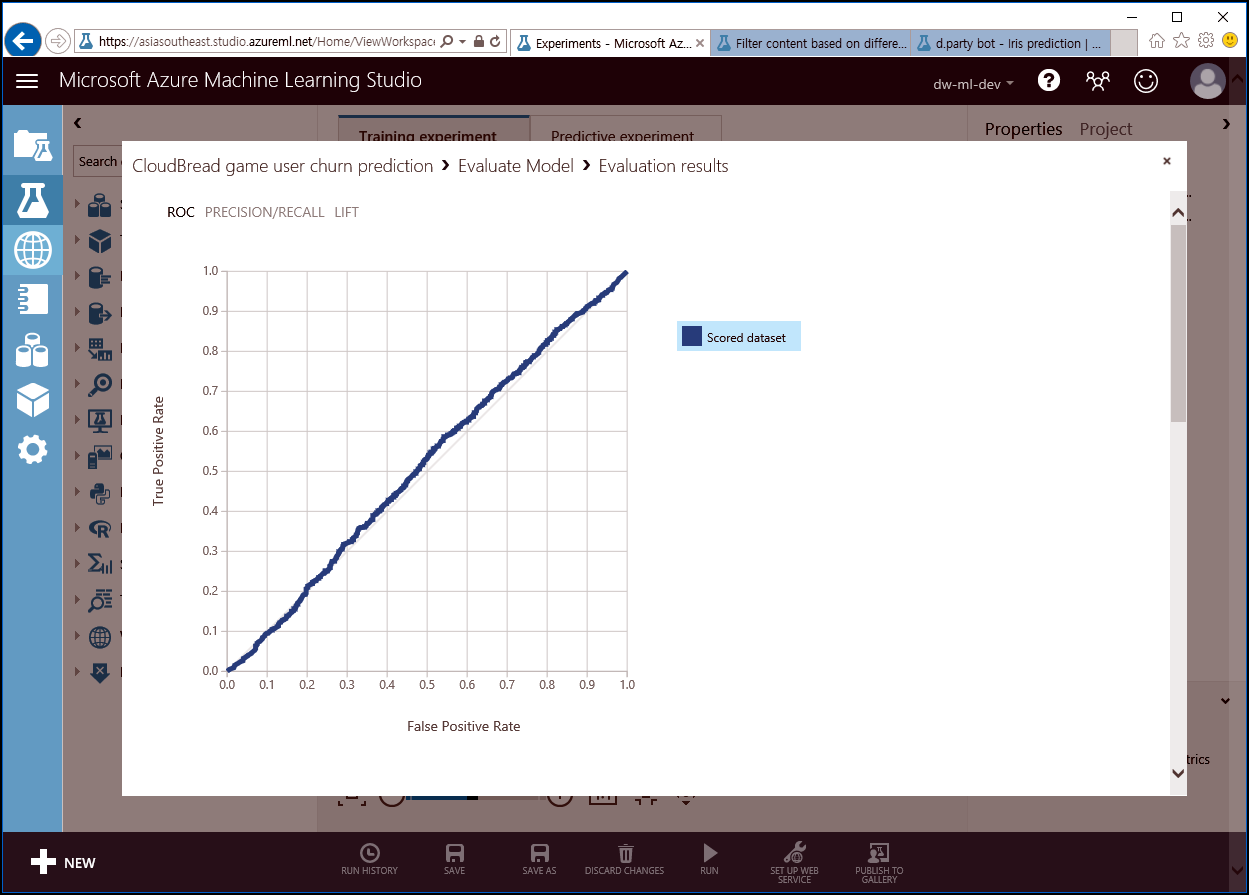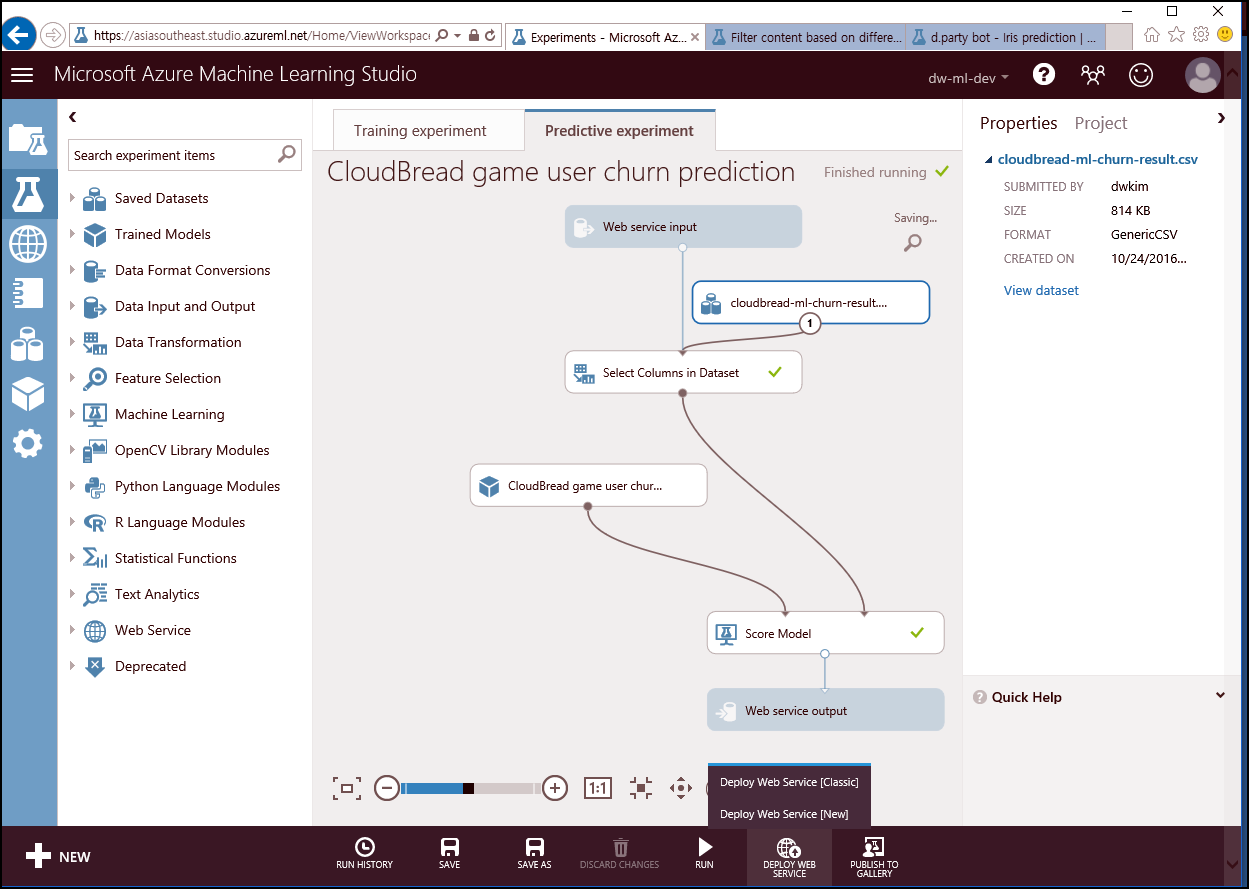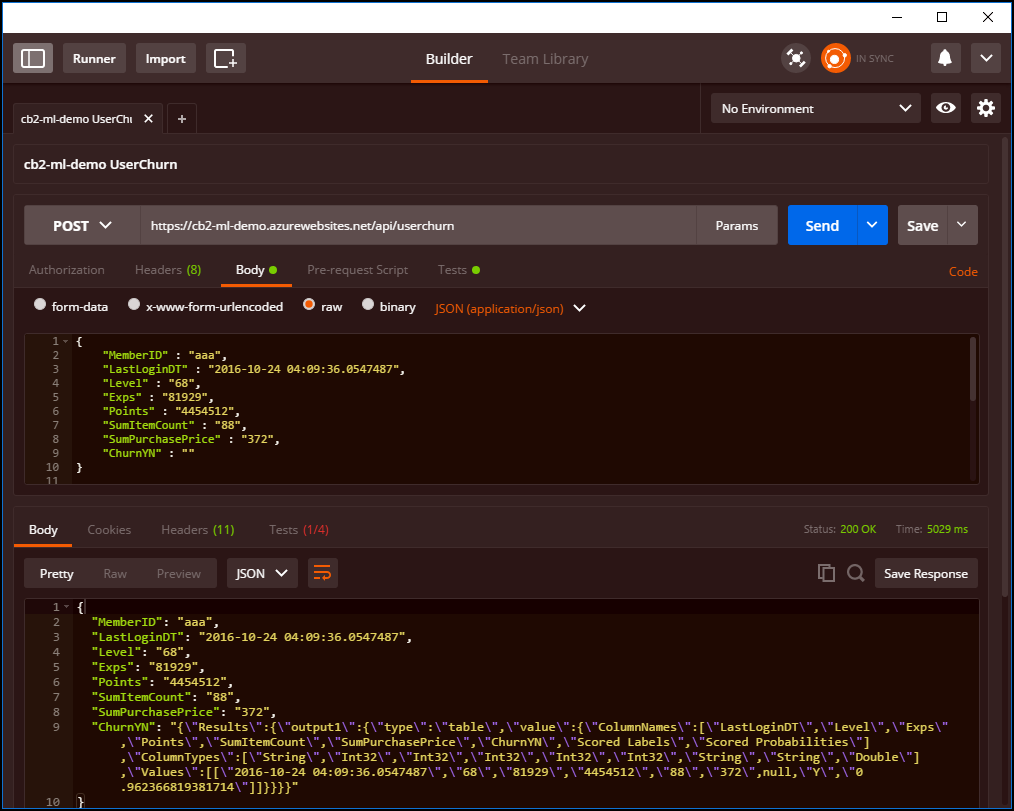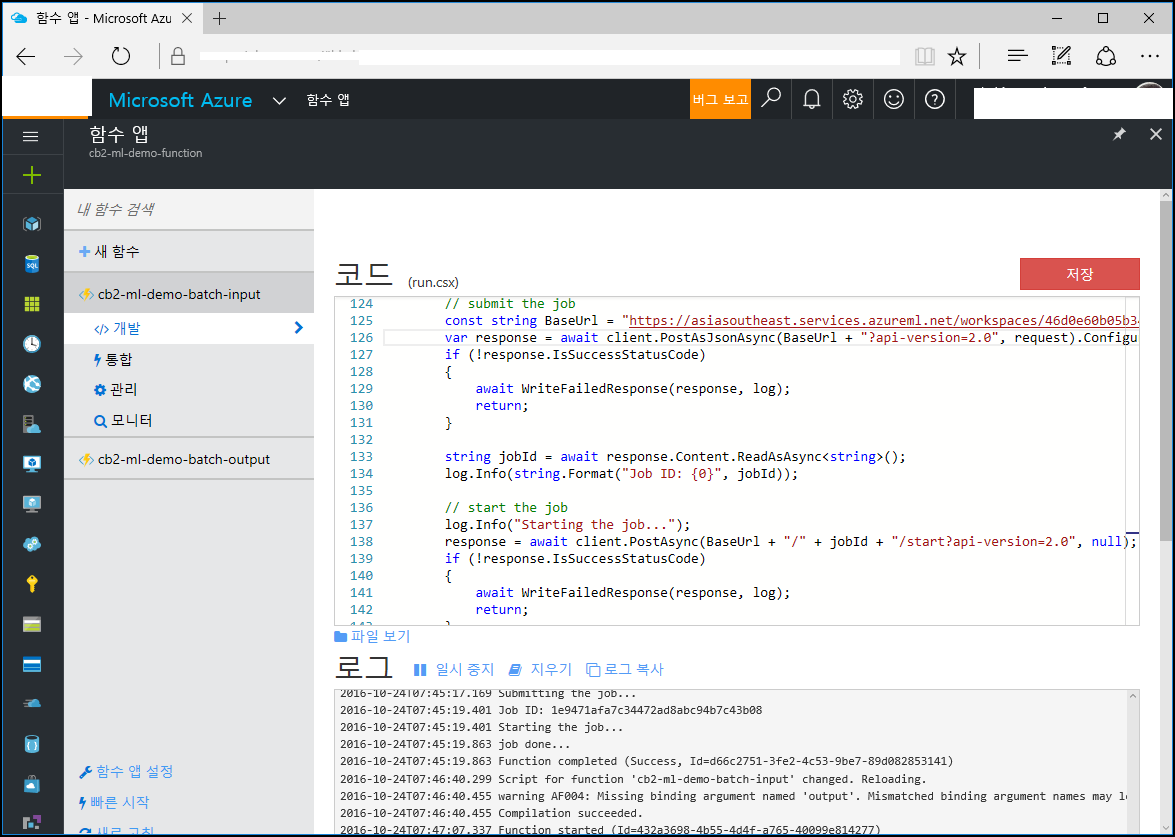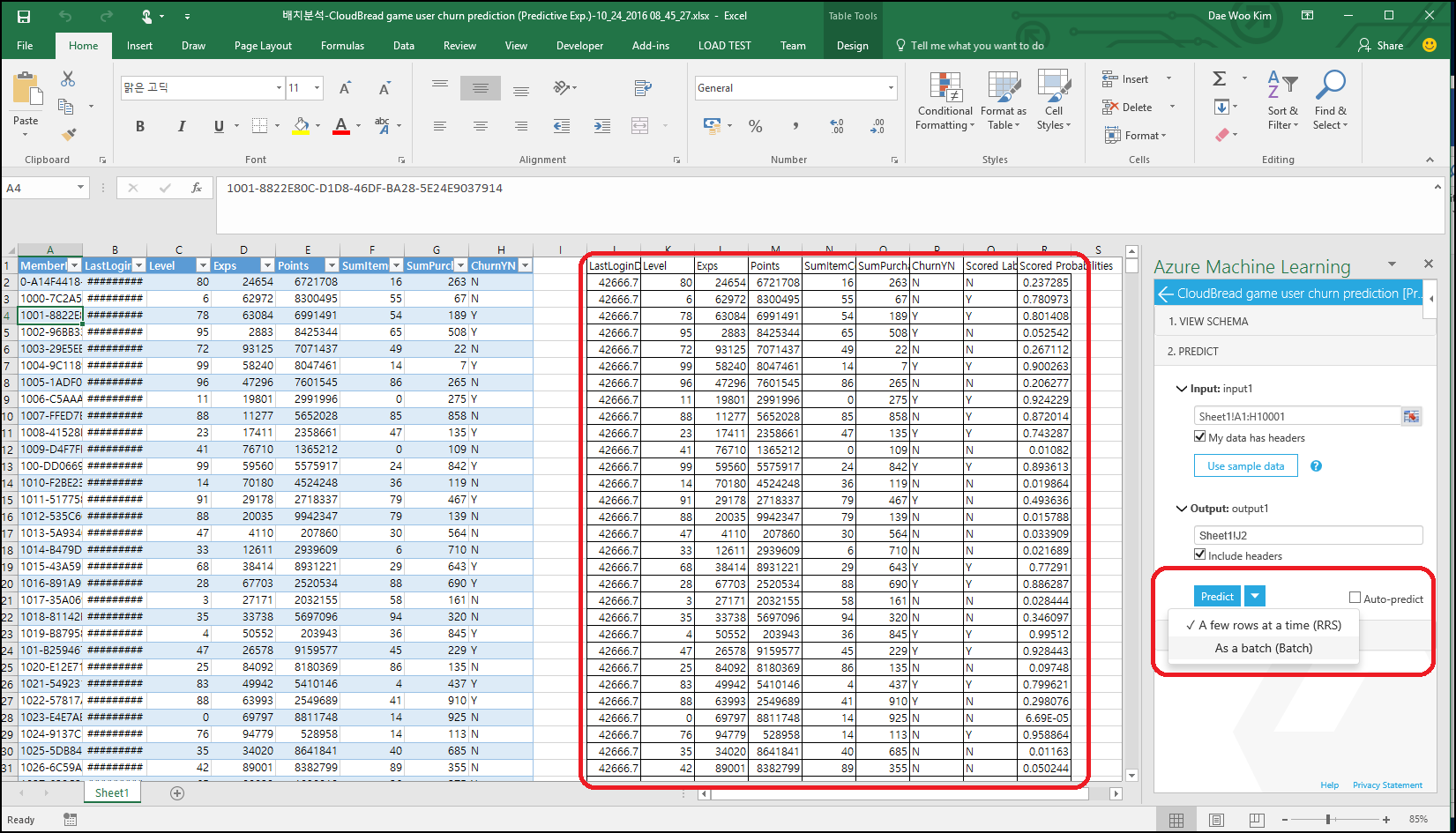SOSCON2016 - OSS 개발자의 Machine Learning 분투기
이 Repo는 SOSCON2016 - Machine Learning의 발표자료 Repo임
- SOSCON 2016 : http://www.soscon.net/
- Session 정보 : http://www.soscon.net/session.do
- Short URL : http://aka.ms/soscon2016-ml
- Github URL : https://github.com/CloudBreadPaPa/soscon2016-ml
사용되는 이미지 등은 디에스이트레이드 이성희 박사님, 강희재 소장님의 허락 하에 게시합니다.
Iris 데모 데이터
Iris 데모 데이터는 붓꽃 Lebel 데이터로 일반적인 분석 시나리오의 설명 등에 사용되는 예제 데이터임
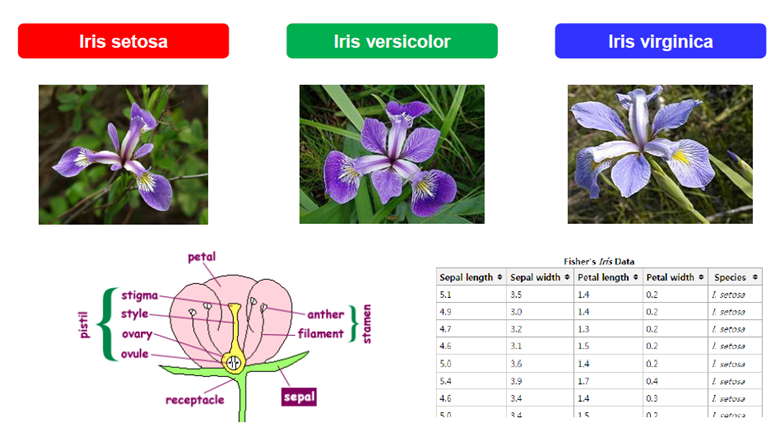
Iris 데이터 link : data 폴더 참조
Iris 모델 구축 데모
Iris 데이터에 대해 Multi-class 예측 모델 구축
Azure ML Iris 모델 : https://gallery.cortanaintelligence.com/Experiment/d-party-bot-Iris-prediction-1
Bot Framework 데모
채팅봇을 이용해 다양한 채널 제공자와 채팅 가능
https://aka.ms/dpartybot
NumPy 및 Pandas 셀프 스터디 - Jupyter 노트북
Jupyter 에서 즉시 실행가능
PyData : https://github.com/wesm/pydata-book
Clustering 알고리즘 등의 R 코드
Repo에서 제공하고 있는, r-script.r 파일을 R Studio에서 열고 실행 가능
Azure Machine Learning을 활용한 prediction 모델
고객 이탈 예측 및 item 추천 예측 모델 데모로 사용한 링크 정보
game user churn prediction : https://gallery.cortanaintelligence.com/Experiment/CloudBread-game-item-suggestion-prediction-1
game item suggestion prediction : https://gallery.cortanaintelligence.com/Experiment/CloudBread-game-item-suggestion-prediction-1
Machine Learning algorithm
Machine Learning에서 데이터를 활용해 예측 분석 서비스가 가능하도록 학습시키기 위한 알고리듬 및 Machine Learning workflow 를 구현
고객이탈 예측(Game user churn prediction) real-time prediction & Batch prediction
게임내 아이템 추천(In-game item suggestion) real-time prediction & Batch prediction
위의 모델은 모두 CloudBread 팀이 공개한 CloudBread Machine Learning의 예측 분석 모델
**예측 분석 목표 정의 : **
위의 공개한 분석모델을 활용해 예측모델(Predict model)을 구축하고 API를 통해 실시간 예측을 수행하는 것이 목표.
-
Machine Learning 모델을 생성하거나, 위의 gallery에서 복제
-
모델을 실행하고, 수행된 예측 결과 확인
-
Predictive model로 생성 후 API Web Service로 배포
-
생성된 Web service의 API Key를 이용해 C# 코드에서 real-time predict 수행
public class UserChurnController : ApiController { // POST api/UserChurn public HttpResponseMessage POST(CBChurn p) { // Machine Learning 분석 요청 InvokeRequestResponseService(p).Wait(); ... } // Machine Learning Web Service 호출 static async Task InvokeRequestResponseService(CBChurn p) { ... const string apiKey = "API키-수정"; // Replace this with the API key for the web service client.DefaultRequestHeaders.Authorization = new AuthenticationHeaderValue("Bearer", apiKey); client.BaseAddress = new Uri("Machine-Learning-Web-Service-URL-수정"); HttpResponseMessage response = await client.PostAsJsonAsync("", scoreRequest).ConfigureAwait(false); if (response.IsSuccessStatusCode) { string result = await response.Content.ReadAsStringAsync(); Debug.WriteLine("Result: {0}", result); p.ChurnYN = result; } ... } } -
Machine Learning API Controller를 publish 하고, Postman에서 테스트 수행해 real-time prediction 수행
-
Batch 작업을 수행하기 위해서 Machine Learning Batch execution이 제공하는 코드 이용이 가능.
-
추가적으로, Functions를 이용해 server-less로 batch 호출 역시 가능
-
Excel을 이용해 Batch 분석도 가능
-
In-game에서 게이머의 패턴과 특성을 취합해 학습 시킨 후 적절한 유료 아이템을 추천하는 시나리오 역시 게임 서비스에서 매우 중요한 매출과 직결되는 예측 분석이며, 관련해 predict model로 in-game item suggestion을 제공
Python + Machine Learning 데모 코드
Azure Machine Learning이 노출하는 API를 Python에서 호출하는 예제 수행
Iris 데이터를 호출해 RRE를 수행하는 예제
python 폴더 하위의 ml-Iris.py 파일 참조
import urllib2
# If you are using Python 3+, import urllib instead of urllib2
import json
data = {
"Inputs": {
"input1":
{
"ColumnNames": ["Sepal.Length", "Sepal.Width", "Petal.Length", "Petal.Width", "Species"],
"Values": [ [ "0", "0", "0", "0", "" ], [ "1", "1", "1", "1", "" ], ]
}, },
"GlobalParameters": {
}
}
body = str.encode(json.dumps(data))
url = 'https://asiasoutheast.services.azureml.net/workspaces/<ML-API-URL>'
api_key = '<API-KEY>' # Replace this with the API key for the web service
headers = {'Content-Type':'application/json', 'Authorization':('Bearer '+ api_key)}
req = urllib2.Request(url, body, headers)
try:
response = urllib2.urlopen(req)
# If you are using Python 3+, replace urllib2 with urllib.request in the above code:
# req = urllib.request.Request(url, body, headers)
# response = urllib.request.urlopen(req)
result = response.read()
print(result)
except urllib2.HTTPError, error:
print("The request failed with status code: " + str(error.code))
# Print the headers - they include the requert ID and the timestamp, which are useful for debugging the failure
print(error.info())
print(json.loads(error.read()))
User Churn Predition을 수행하는 RRE를 수행하는 예제
python 폴더 하위의 ml-user-churn.py 파일 참조
import urllib2
# If you are using Python 3+, import urllib instead of urllib2
import json
data = {
"Inputs": {
"input1":
{
"ColumnNames": ["MemberID", "LastLoginDT", "Level", "Exps", "Points", "SumItemCount", "SumPurchasePrice", "ChurnYN"],
"Values": [ [ "value", "value", "0", "0", "0", "0", "0", "value" ], [ "value", "value", "0", "0", "0", "0", "0", "value" ], ]
}, },
"GlobalParameters": {
}
}
body = str.encode(json.dumps(data))
url = 'https://asiasoutheast.services.azureml.net/workspaces/<ML-API-URL>'
api_key = '<API-KEY>' # Replace this with the API key for the web service
headers = {'Content-Type':'application/json', 'Authorization':('Bearer '+ api_key)}
req = urllib2.Request(url, body, headers)
try:
response = urllib2.urlopen(req)
# If you are using Python 3+, replace urllib2 with urllib.request in the above code:
# req = urllib.request.Request(url, body, headers)
# response = urllib.request.urlopen(req)
result = response.read()
print(result)
except urllib2.HTTPError, error:
print("The request failed with status code: " + str(error.code))
# Print the headers - they include the requert ID and the timestamp, which are useful for debugging the failure
print(error.info())
print(json.loads(error.read()))
EOF

